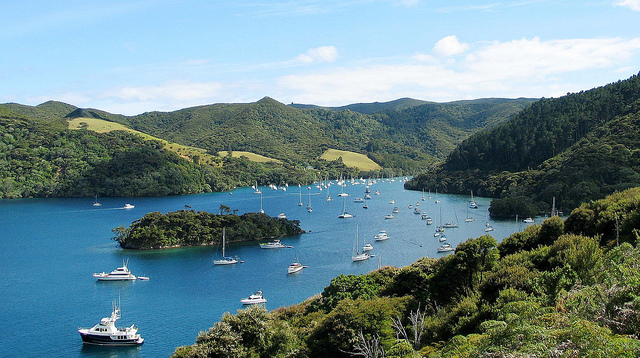New Zealand Coastal Policy Statement 2010

The NZCPS contains a number of policies relevant to aquaculture developments and operations. These policies attempt to strike an effective balance between providing for such activities in the coastal environment and ensuring that important natural resources and community and cultural values are protected in doing so.
1729
The Department of Conservation has provided some guidance to planners in interpreting the application of the NZCPS policies to aquaculture planning and decision-making, including a checklist of important matters to consider.
1730
Aquaculture
Policy 8 recognises the significant existing and potential contribution of aquaculture to the social, economic and cultural well-being of people and communities. This is done through directing that aquaculture activities are provided for in appropriate places within regional planning documents. It recognises that aquaculture activities require high water quality and land-based facilities. In addition, the policy directs that development in the coastal environment does not make water quality unfit for aquaculture activities in areas approved for that purpose.
Policy 8: Aquaculture
Recognise the significant existing and potential contribution of aquaculture to the social, economic and cultural well-being of people and communities by:
a) including in regional policy statements and regional coastal plans provision for aquaculture activities in appropriate places in the coastal environment, recognising that relevant considerations may include:
1. the need for high water quality for aquaculture activities; and
2. the need for land-based facilities associated with marine farming;
b) taking account of the social and economic benefits of aquaculture, including any available assessments of national and regional economic benefits; and
c) ensuring that development in the coastal environment does not make water quality unfit for aquaculture activities in areas approved for that purpose.
Protecting outstanding natural features and landscapes
Policy 13 and Policy 15 of the NZCPS require adverse effects on outstanding natural features and landscapes and areas of the coastal marine area with outstanding natural character to be avoided. This effectively means that marine farms will not be able to proceed in sensitive areas of the coastal marine area and should instead be directed to localities where the natural character or landscape values of the area have already been compromised or are not outstanding. A recent Supreme Court decision on a salmon farm proposal in the Marlborough Sounds confirmed that plan changes must give effect to policies 13(1)(a) and 15(a) of the NZCPS and avoid adverse effects on outstanding natural landscapes.
1731
King Salmon applied for plan changes and resource consents for salmon farms at nine sites in the Marlborough Sounds. The Board of Inquiry found that a 92 hectare industrial-scale salmon farm within Port Gore site would adversely affect an outstanding natural landscape, but the farm was still approved. The Supreme Court overturned the decision, making it clear that a plan could not provide for the establishment of a marine farm in a location where it results in adverse effects on an outstanding natural landscape.
1732
The Environment Court recently considered whether a resource consent application to convert a mussel farm (located in Pelorus Sound) to a salmon farm should be granted. 1733 The site was identified as an “Area of Outstanding Landscape Value” in the Marlborough Sounds Resource Management Plan and therefore section 6(b) RMA and policy 15 NZCPS were applicable. Section 6(e) regarding Maori interests was also applicable. The application was turned down on the basis that section 6(b) and (e) (as particularised by the NZCPS 2010) were “sticking points” (at [215]) and “[p]lacing all relevant considerations in the balance … we consider the purpose of the RMA, and the instruments made under it, is better achieved if consent is refused’ (at [217])”.
Protecting indigenous vegetation and fauna
Under policy 11, a marine farm applicant will need to show that there will be no adverse effects on indigenous vegetation and fauna which are threatened, at risk or naturally rare. In relation to other indigenous species and ecosystems, an applicant must show that significant adverse effects have been avoided and other adverse effects have been avoided, remedied or mitigated.
Harmful aquatic organisms
Policy 12 addresses the management of harmful aquatic organisms and requires councils to provide in regional policy statements and plans, as far as practicable, for the control of activities that could cause harmful aquatic organisms to be released or otherwise spread including “the establishment and relocation of equipment and stock required for or associated with aquaculture”.
Protecting water quality
Policy 23 of the NZCPS addresses the discharge of contaminants into the marine environment, which includes those by aquaculture. It directs particular regard to be had to a number of matters including the sensitivity of the receiving environment, the nature of the contaminants to be discharged and the capacity of the receiving environment to assimilate the contaminants.
In addition, Policy 8(c) and Policy 21 of the NZCPS require councils to consider the effects of other resource use on the water quality required for aquaculture, and to work to improve coastal water quality where aquaculture growing areas are significantly adversely affected. 1734
-
NZCPS 2010, Policy 6(1)(c)
-
Department of Conservation, 2013c
-
Environmental Defence Society Incorporated v The New Zealand King Salmon Company Limited and Ors, SC 82/2013 [2014] NZSC 38
-
http://www.eds.org.nz/content/documents/pressreleases/2014/140417%20KS%20media.pdf
-
KPF Investments Limited v Marlborough District Council [2014] NZEnvC 152
-
Department of Conservation, 2013c
Last updated at 3:09PM on February 2, 2018